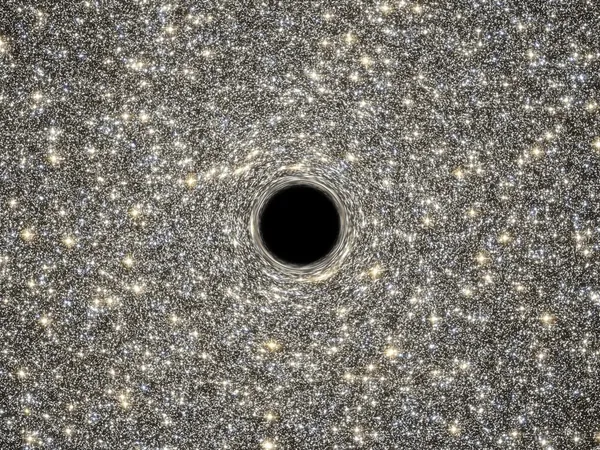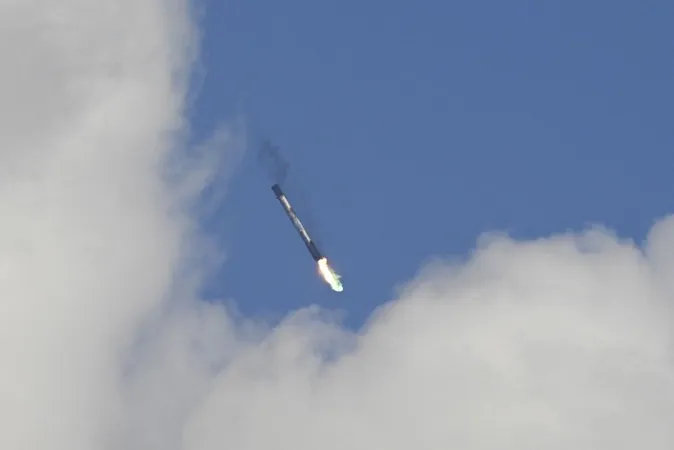
The Future of Electronics: 'Wiggling' Atoms Could Revolutionize Technology
2025-09-16
Author: Michael
Exciting news from researchers at Michigan State University! They've discovered a groundbreaking method to manipulate atoms using an ultra-fast laser, a breakthrough that could pave the way for smaller, faster, and more efficient electronics—think smartphones of the future!
A Novel Approach to Atom Manipulation
The brilliant minds behind this innovation, Associate Professor Tyler Cocker and Assistant Professor Jose L. Mendoza-Cortes, have cleverly merged theory and experimentation in quantum mechanics. This fusion allows them to explore the unexpected behaviors of materials and push the boundaries of electronic technology.
How It Works: A Closer Look at WTe2
Their experiments focus on a unique material known as tungsten ditelluride (WTe2), composed of tungsten atoms sandwiched between tellurium layers. Using a specially designed scanning tunneling microscope, the team can observe individual atoms, akin to reading braille, while applying terahertz laser pulses that oscillate at speeds potentially hundreds of trillions of times per second.
With these laser pulses concentrated on a sharp metal tip, the top layer of atoms in WTe2 can be nudged out of alignment, making them behave in ways never seen before. Imagine a stack of papers—just a small misalignment can make a world of difference!
Transforming Electronic Properties
As the laser pulses trigger this atomic dance, new electronic characteristics emerge, allowing researchers to utilize these wiggling atoms like a nanoscale switch that can alter the electrical properties of WTe2. This dynamic control could be a game-changer for next-generation devices, and in a stunning visual feat, Cocker’s microscope can capture the 'on' and 'off' states of this innovative switch in action.
Collaboration is Key
The brilliance of this research lies in the collaboration between experimental and theoretical approaches. While Cocker's lab observed the atomic behavior, Mendoza-Cortes's team employed simulations to align their findings, ensuring that their results corroborated each other. They discovered that the topmost layer of WTe2 experienced only a subtle shift of 7 picometers—a minuscule movement only observed through these specialized techniques.
Looking Ahead: The Implications for Technology
Both Cocker and Mendoza-Cortes are optimistic about the implications of their research. As they aspire to develop new materials that offer lower costs, enhanced speeds, and greater energy efficiency, the possibilities for the tech industry are boundless. Just imagine a future where your smartphone or laptop runs more efficiently than ever, thanks to innovative materials derived from this cutting-edge research.
Their findings have been published in Nature Photonics and were also supported by the Institute for Cyber-Enabled Research at Michigan State University.
MSU’s Legacy of Innovation
Michigan State University has been at the forefront of advancing knowledge and technology for 170 years, continually striving to create a better world for all. With a diverse array of over 400 programs, MSU remains committed to pushing the limits of discovery and education.









 Brasil (PT)
Brasil (PT)
 Canada (EN)
Canada (EN)
 Chile (ES)
Chile (ES)
 Česko (CS)
Česko (CS)
 대한민국 (KO)
대한민국 (KO)
 España (ES)
España (ES)
 France (FR)
France (FR)
 Hong Kong (EN)
Hong Kong (EN)
 Italia (IT)
Italia (IT)
 日本 (JA)
日本 (JA)
 Magyarország (HU)
Magyarország (HU)
 Norge (NO)
Norge (NO)
 Polska (PL)
Polska (PL)
 Schweiz (DE)
Schweiz (DE)
 Singapore (EN)
Singapore (EN)
 Sverige (SV)
Sverige (SV)
 Suomi (FI)
Suomi (FI)
 Türkiye (TR)
Türkiye (TR)
 الإمارات العربية المتحدة (AR)
الإمارات العربية المتحدة (AR)